Exploring the Last Frontier

Irwing Vielma ’24, M.S. ’25 did not expect that his time at Le Moyne would include visiting one of the largest Iñupiat settlements in Alaska, or that he would explore glaciers in the nation’s 49th state and examine the skies for the snowy owl. Vielma earned a bachelor’s degree in computer science and a master’s degree in information systems on the Heights; his long-term goal is to pursue a doctoral degree in industrial engineering and to study human-robot interactions. Still, he is grateful for the time he spent in what is known as The Last Frontier. It was formative, teaching him how computer science and industrial engineering intersect. And the experience showed him how disciplines like computing, engineering, and the natural sciences are solving global challenges, from conserving the environment to developing infrastructure to supporting communities in need.
A New York City native, Vielma took part in the 2024 Arctic Summer Internship Program (ASIP). The initiative, which is affiliated with the University of Alaska’s Applied Environmental Research Center, brings students to Anchorage for 10 weeks of hands-on research. ASIP fellows engage with projects that support the mission of ADAC-ARCTIC, a Department of Homeland Security Center of Excellence that leverages technology, innovation and education to improve the nation’s capacity to respond effectively to emerging challenges in the Arctic. He learned about the opportunity through Martha Grabowski, Ph.D., who recently retired as the McDevitt Chair for Information Systems and who encouraged him to apply.
I was immediately drawn to the unique opportunity to travel to Alaska. This experience aligned perfectly with my long-term goal of contributing to innovative solutions for emerging global issues. It has given me the chance to immerse myself in Alaska’s culture and environment in a way that someone in the Northeast might not get to experience. I couldn’t pass it up. It felt like a once-in-a-lifetime opportunity to broaden my horizons and gain a deeper understanding of the world and its pressing challenges.
From the Icy Tundra to the Lab Bench
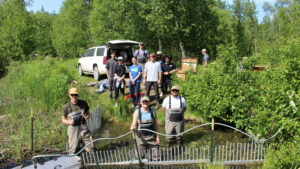
Vielma and the other fellows learned from researchers from around the world who spoke about their work as it relates to the preservation of the environment. They heard from experts like Craig Tweedie, Ph.D., who studied subantarctic climate change biology before transitioning to Arctic terrestrial ecology.
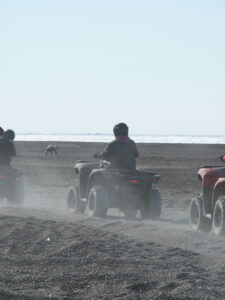
As they ride ATVs across the Barrow tundra, participants in the Arctic Summer Internship Program keep a respectful distance from a polar bear in the area.
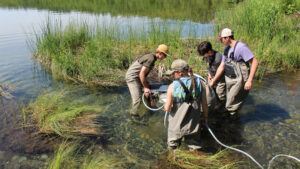
They toured the William Sound, where they experienced the stunning natural beauty and ecological diversity of the area. They observed diverse wildlife, including sea otters and migratory birds, while learning about the balance of the region’s ecosystems and the ongoing efforts to protect them from environmental threats. In short, they immersed themselves in Alaskan life, exposing themselves to new people, places and ideas.
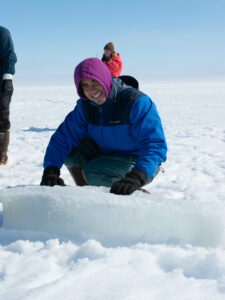
Vielma examines a freshly extracted ice core sample on the Arctic Sea ice in Barrow, Alaska.
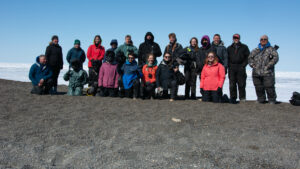
“This experience has strengthened my ability to think critically and approach problem solving with an open mindset – both crucial skills for a researcher. Beyond technical skills, this journey reinforced the value of adaptability and cultural awareness in research. As I [one day] pursue my Ph.D., these experiences will shape how I contribute to innovative solutions in my field.”

This experience aligned perfectly with my long-term goal of contributing to innovative solutions for emerging global issues.”


